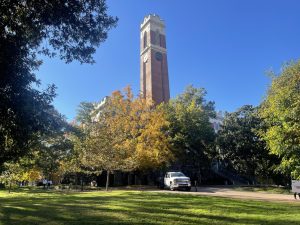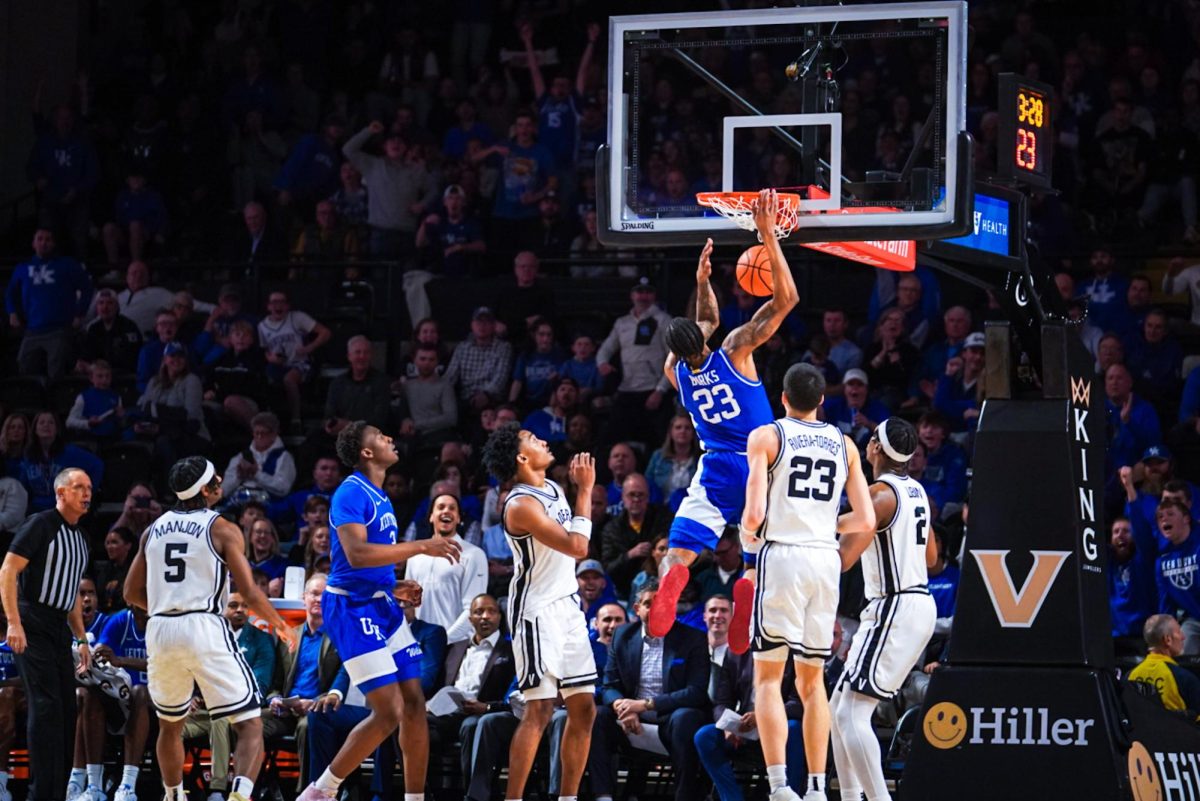At this time last year, Vanderbilt entered conference play 3-1, with many holding hopes and expectations that the Commodores were building a program meant to change the culture in the near future. This season, Vanderbilt has barely scraped by, sitting at 2-2 after a humbling by Wake Forest that was followed up by a last-minute heartbreak against UNLV.
In Vanderbilt’s first four games, there were times they looked formidable and disciplined. In other instances, this team has been a shell of its potential, riddled with turnovers and countless errors, consistently shutting the door on any possible momentum they can muster in between potential positives.
Yet, even though the Commodores are down, they are not out. Kentucky, a familiar foe, was the subject of an intense statement win by Vanderbilt last season, as the then ranked No. 24 Wildcats lost 24-21 in Lexington. To get this season back on an upward trajectory, Vanderbilt will need to replicate their performance from last year, and the matchups that follow will be vital to this effort. Let’s check them out.
Vanderbilt vs. The finish line
One of the most notable portions of Vanderbilt’s deflating loss to UNLV was the fact that this team could not maintain a lead nor finish off the game. To start off the game, Vanderbilt jumped out to a 17-0 lead after the first quarter. Then, UNLV put up 30 unanswered points over the next two quarters, capitalizing off the timely turnovers that ultimately put the Commodores in a two-possession hole late into the third quarter. The Commodores roared back, trading scores with the Rebels as time dwindled in the contest.
Then, in a brilliant play that brought about a deep sigh of relief, sophomore linebacker Nicholas Rinaldi jumped in front of a pass delivered by UNLV quarterback Jayden Maiava, setting up Vanderbilt in UNLV territory with the possibility of taking the lead. However, it would only go downhill from there. With 44 seconds left, kicker Jacob Borcila missed a 33-yard field goal attempt, giving UNLV a slim chance with zero timeouts to put any points on the board in retaliation. One hole in the secondary allowed Maiava to hit Ricky White down the sideline for 48 yards, setting up the game-winning kick that sealed a shocking victory.
If there’s one thing great teams do, it’s finish games strongly. Even if that means keeping a lead or performing best in crunch time, the elite programs in the country excel at putting a bow on their opportunities to win, something the Commodores failed to do against UNLV. Whether Vanderbilt plays from behind or jumps out with a lead against Kentucky, to ensure a win they have to play better down the stretch, especially late in the fourth quarter.
Vanderbilt’s receiving core vs. Kentucky’s secondary
Vanderbilt’s receiving room is jam-packed with explosive talent. The obvious star is senior Will Sheppard, who leads the FBS with six receiving touchdowns. To support him, sophomore Jayden McGowan is as crafty as ever and the Commodores have found an emerging stud in first-year London Humphries with an average of 29.6 yards per reception. A bright spot of the UNLV loss was that quarterback AJ Swann took advantage of secondary breakdowns, connecting with his receivers on deep shots frequently. Not to mention that once Vanderbilt breaches the red zone, Sheppard becomes a threat to score any time the ball is floated in his direction.
With a rushing attack that has struggled to find its footing, Vanderbilt can potentially lean on their dynamic group of receivers to aid Swann and the rest of the offense. In their first three games, Kentucky did not play offenses as passing-focused as this Vanderbilt team.
Another facet to this is that Kentucky rebuilt their secondary from the ground up after the 2022 season. Both starting corners from the year prior have moved on to the NFL, leaving the rest of the depth chart to make up for the impact lost. On top of that, transfers JQ Hardaway and Jantzen Dunn are both inexperienced sophomores who didn’t see the field much in their first years, something that can also be taken advantage of by the opposing offense. Attacking this secondary early could be the key to getting Swann in a smooth rhythm, amplifying the danger wideouts like Sheppard, McGowan and Humphries can pose.
Kentucky’s mistakes vs. Vanderbilt’s eager defense
The first three games for the Wildcats have been inconsistent offensively. Head coach Mark Stoops repeated in press conferences that his offense needs to clean up their act. Even at 3-0, Kentucky’s offense has made constant head-scratching mistakes against weaker defensive units, sparking concern in the minds of fans. In all three matchups against Ball State, Eastern Kentucky and Akron, Kentucky failed to get the ball rolling early, only truly waking up on the offensive side of the ball in the second half of each game. Many of the mistakes come down to minor miscues, whether it be penalties, snapping the ball or miscommunications on routes.
However, against better quality defenses, these miscues can become major problems as a defense can benefit from these mistakes and put the offense in a hole early. Vanderbilt’s defense, which has had its own fair share of struggles after giving up 389 yards per game, still looks eager and ready to will themselves to a statement performance.
Going against an offense that is still trying to work out their own issues with clean play, a weak defense can improve by utilizing the Wildcats’ mistakes against them. Getting a grapple on the Kentucky running game, which is spearheaded by former Commodore Davis, can put extra pressure on quarterback Devin Leary. This increases the chances of slip-ups that hopefully give advantages to Vanderbilt defenders.
Vanderbilt aims to kick off conference play with a win as they take on SEC East rival Kentucky at home on Sept. 23 at 11 a.m CDT.






















